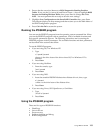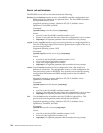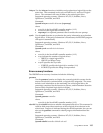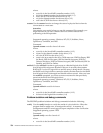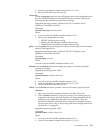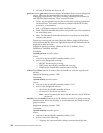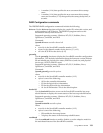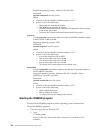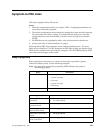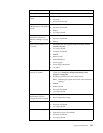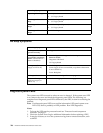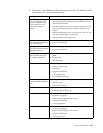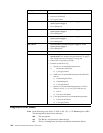Using IBM ServeRAID 141
2. Press Enter.
• If you are using Novell NetWare:
1. From the console, type:
load ipsmon
2. Press Enter.
• If you are using Linux, SCO OpenServer, or UnixWare:
1. Type:
/usr/bin/ipsmon
2. Press Enter.
Using the IPSMON program
When you start the IPSMON monitoring program, it immediately begins polling all
ServeRAID controllers for specific conditions. If a condition being monitored is
found, this program logs a message to the screen, to a file, or to both the screen and a
file.
Supported operating systems: Windows NT, OS/2, NetWare, Linux, OpenServer,
UnixWare
Command:
ipsmon options
where:
• options is one of the following optional parameters:
—-F:filename to specify the name of the file in which to record messages. The
default file name is IPSMON.LOG.
— -S to display messages on the standard output (usually the monitor)
— -? to obtain a current list of valid parameters
Note: If you start this program without any command-line parameters, the
IPSMON program will log the messages to the IPSMON.LOG file, and the
messages will not appear on the screen.
After you start the IPSMON program, the program will continuously poll the
ServeRAID controllers until you take one of the following actions:
• If you are using Windows NT or OS/2, press Ctrl+C.
• If you are using NetWare, type unload ipsmon at the system console.
• If you are using OpenServer or UnixWare, press the Del key to cancel the
program.
During operation, the program will log various messages. Each message will contain
an alert code and a location specifier.
• The alert code begins with the message type and number; for example, INF,
WRN, or CRT (followed by the message number).
• The location specifier comes after the alert code:
A followed by the controller number
SID followed by the SCSI ID (if required)
C followed by the channel number (if required)
For example, a message of CRTxxx:A2C3SID04 signifies that a Critical condition
(CRTxxx) was found on Controller 2 (A2), Channel 3 (C3), SCSI ID 4 (SID04).



